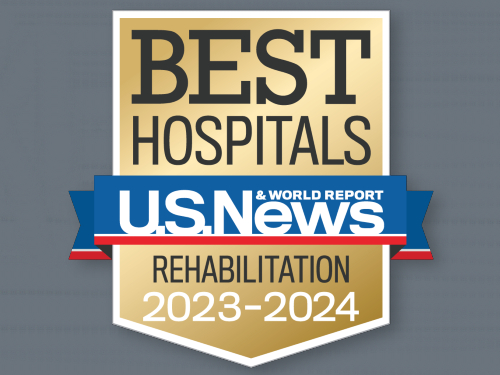In a study under way at TIRR Memorial Hermann, researchers are investigating the effects of combined transcranial direct current stimulation (tDCS) and robotic-assisted training on arm and hand function in subjects with incomplete spinal cord injury. Funded by Mission Connect, a project of TIRR Foundation, the investigation is the continuation of a pilot study led by Nuray Yozbatiran, PhD, PT, the results of which demonstrated that robotic-assisted training is safe, feasible and effective in patients with incomplete tetraplegia.

“At the time we started the pilot study, robotic-assisted training of the upper extremity had been extensively studied in the recovery of motor function after stroke, but no data had been published about robotic training in persons with spinal cord injury, including those with incomplete tetraplegia,” says Dr. Yozbatiran, who is director of the Neuromodulation and Neural Interfaces Labs at the TIRR Memorial Hermann NeuroRecovery Research Center. “We were one of the first groups with an interest in using robotics for upper-extremity rehab in SCI.” The results of the pilot study were presented at the IEEE International Conference on Rehabilitation Robotics in 2011 and published as a case report in the Journal of Rehabilitation Medicine in 2012.1
In the new study, Dr. Yozbatiran and her colleagues are determining if they can augment the recovery of function by adding central stimulation to robotic-assisted therapy. The efficacy of tDCS has been studied in stroke patients, and researchers have reported that noninvasive brain stimulation adds to overall recovery. Dr. Yozbatiran hopes to find similar improvements in arm and hand function in participants with incomplete tetraplegia.
“In the literature, the emphasis has been on gait training after SCI, when half of the people with tetraplegia say that regaining arm and hand movement will most positively affect their quality of life,” she says. “In addition to multiple medical problems related to the high level of the spinal cord injury, these patients are dependent on assistance for self-care. We hope this study will lead ultimately to improved function and independence.”
Participants in the study were randomly assigned to one of two study groups: active tDCS with repetitive robotic-assisted training or sham tDCS with repetitive robotic-assisted training. Treatment was administered at an intensity of five 1.5-hour sessions per week for two weeks.
Dr. Yozbatiran reports that preliminary results have been positive, leading Mission Connect to fund two new related projects in 2014. In addition, the research team has been invited to submit a grant proposal to the Craig H. Neilsen Foundation. Team members include Marcia O’Malley, PhD, director of rehabilitation engineering at TIRR Memorial Hermann and director of the Mechatronics and Haptic Interfaces (MAHI) Lab and associate professor of mechanical engineering and materials science at Rice University; Gerard Francisco, MD, chief medical officer and chair of the department of Physical Medicine and Rehabilitation (PM&R) at McGovern Medical School at UTHealth; Matthew Davis, MD, clinical director of the Spinal Cord Injury Program and clinical assistant professor of PM&R at McGovern Medical School; Zafer Keser, MD, postdoctoral research fellow in PM&R at McGovern Medical School; and Khader Hasan, PhD, associate professor in the department of Diagnostic and Interventional Imaging at McGovern Medical School.
“We believe that combining the two therapy modalities will improve functional recovery as compared to either therapy alone,” she says. Results of the current combination therapy study will be available by late winter and will be reported in a future issue of the TIRR Memorial Hermann Journal.
1 Yozbatiran N, Berliner J, O’Malley MK, Pehlivan AU, Kadivar Z, Boake C, Francisco GE. Robotic training and clinical assessment of upper-extremity movements after spinal cord injury: A single case report. Journal of Rehabilitation Medicine. 2012 Feb;44(2):186-8.
